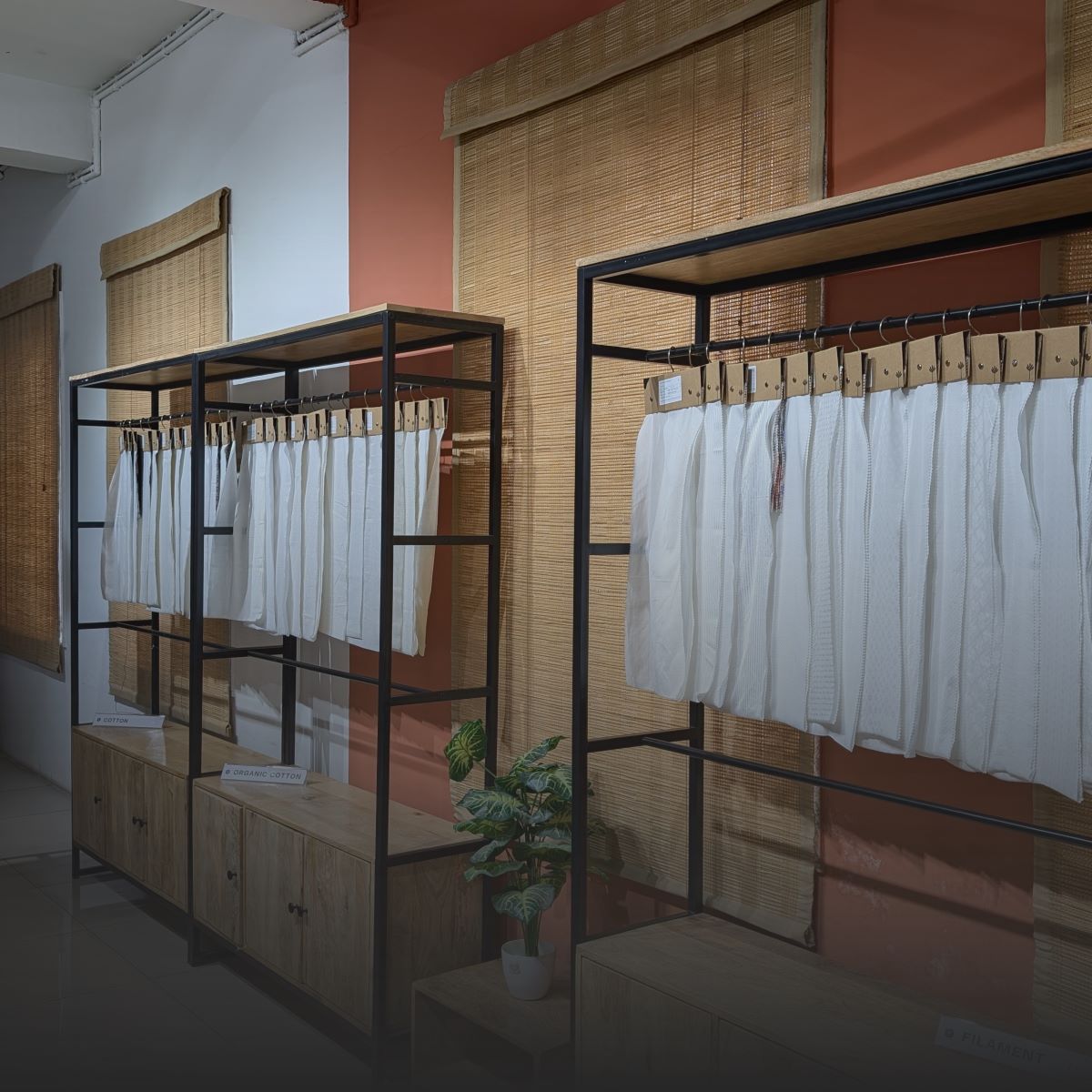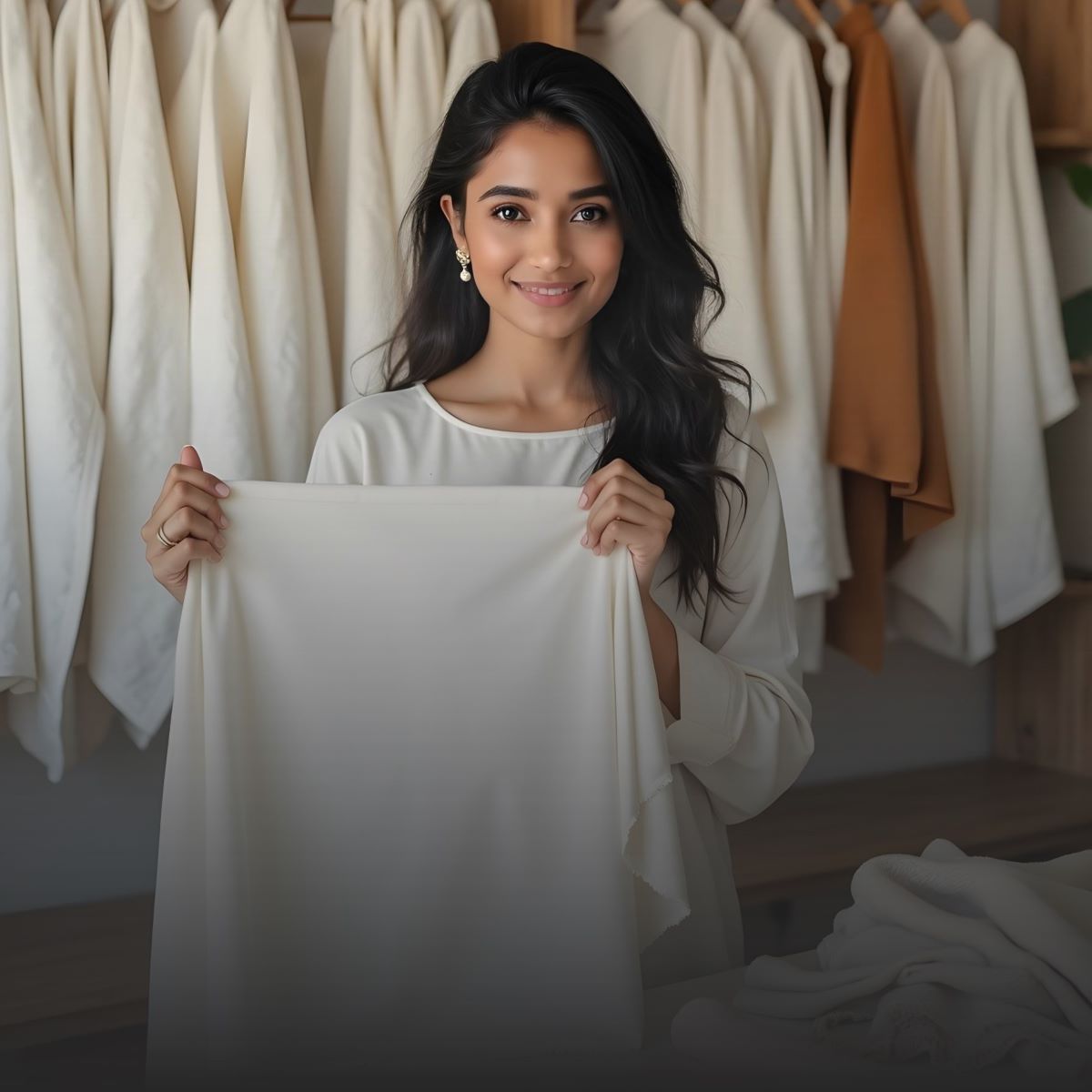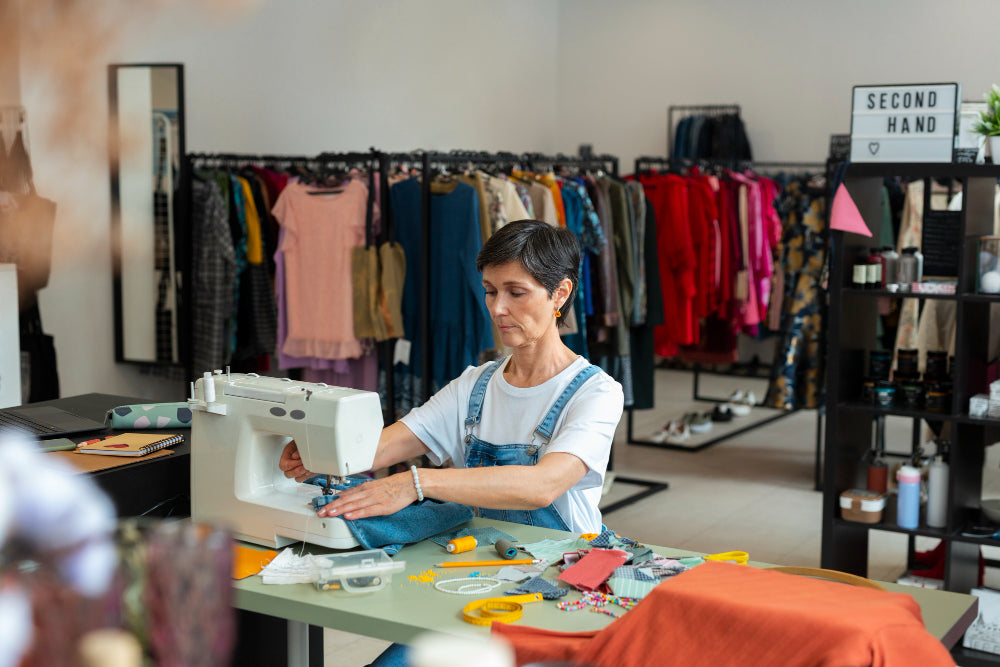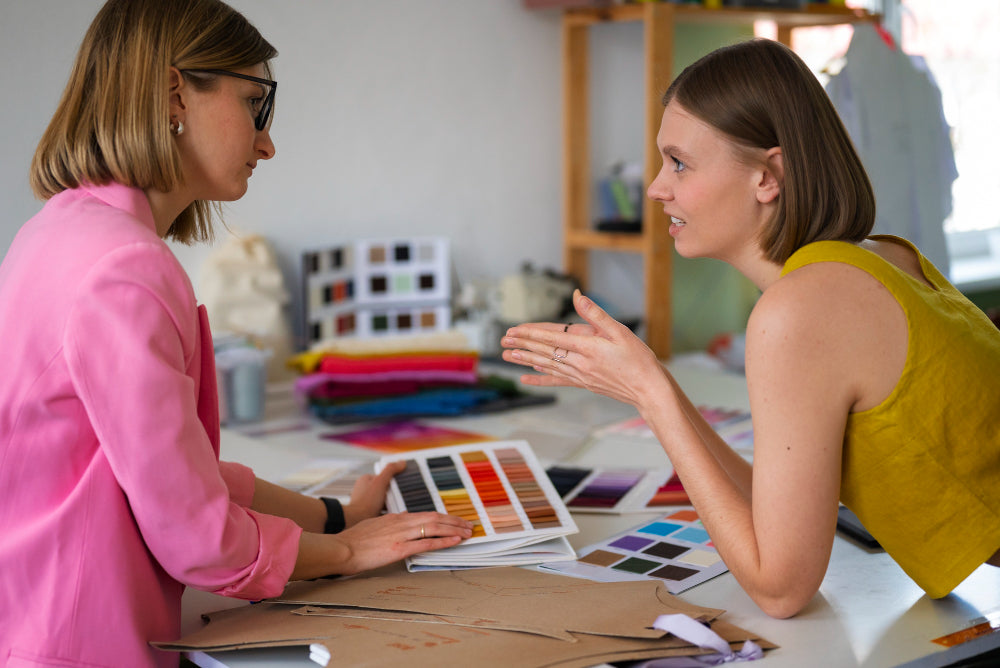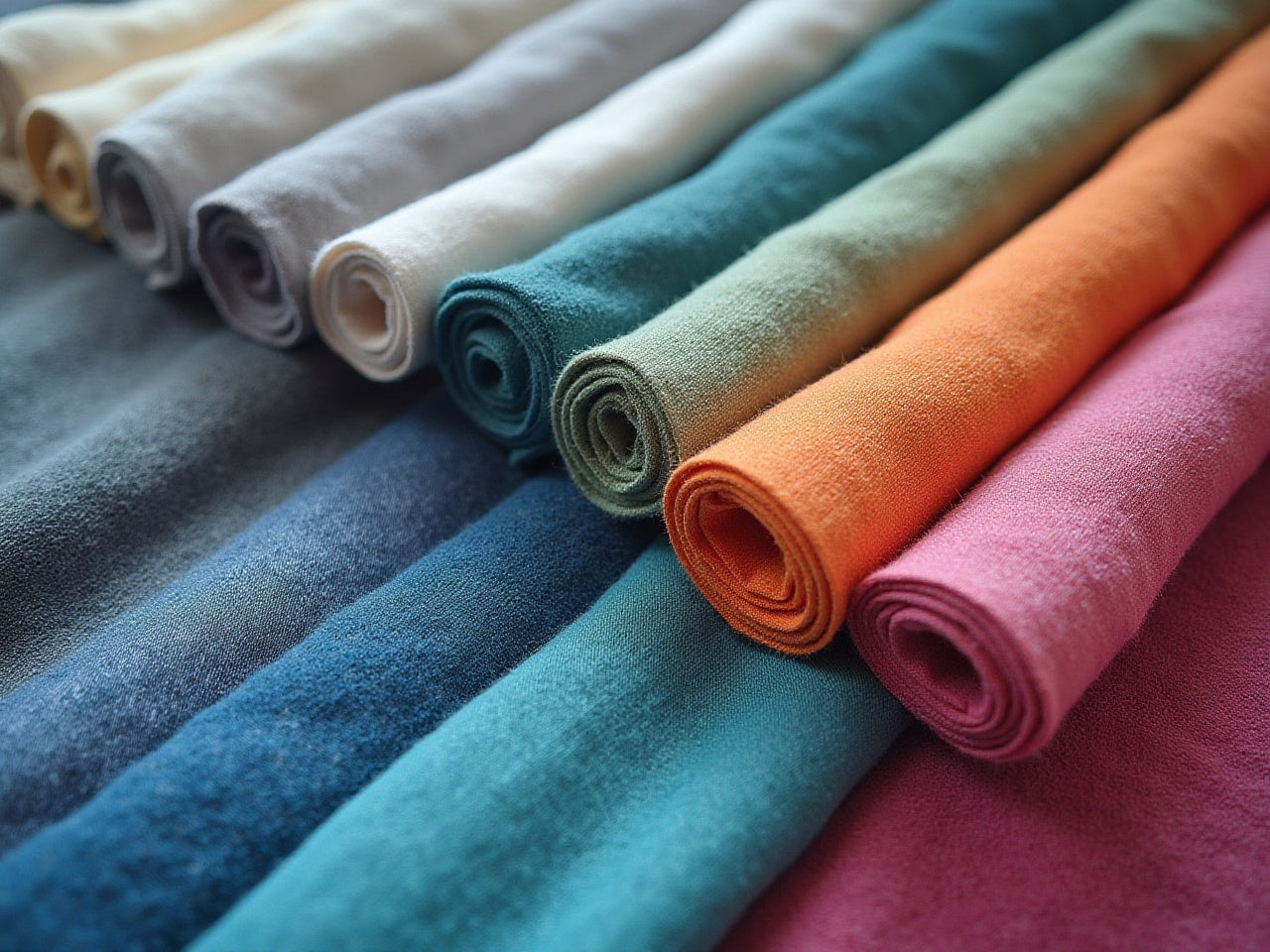The global apparel market is expected to reach nearly two trillion US dollars by 2027. To support this growth, many brands continue to rely on Asia for garment production. Countries in the region have built systems that support high output while maintaining quality. India has become a leading force in this shift through its wide supplier network and deep textile knowledge.
Apparel, textile and footwear production remain key parts of many Asian economies. In places like India, these sectors work alongside fabric mills and export units. This setup reduces delays, improves supply coordination and supports faster product delivery.
Why brands choose Asia:
- Skilled labor with training in export-ready garment standards
- Local production zones located near textile hubs
- Stable order timelines with transparent communication
- Flexible production capacity for various brand sizes
These strengths allow manufacturers in Asia to meet changing business needs. The next step is knowing how to identify the manufacturers that deliver consistent results.
What Makes a Garment Manufacturer Stand Out in 2025

Every brand wants a manufacturer it can trust. In 2025, trust depends on clear systems, timely communication and strong product understanding. A manufacturer who supports both design and delivery creates fewer issues during production.
Certain qualities help identify a reliable partner:
- Understand product types and order needs
- Manages sourcing, sampling and packaging
- Follows quality checks at each step
- Responds on time with full clarity
These qualities support smoother orders with fewer delays. Once you know what to expect from a good partner, it becomes easier to choose the right one.
Top 6 Garment Manufacturers in Asia
Garment manufacturing in Asia has evolved beyond bulk output. Today, brands look for partners who support custom orders, fabric sourcing, sampling and technical assistance. These six manufacturers stand out for their performance in 2025.
1. Fabriclore (India)
Fabriclore supports global fashion brands through complete garment development. From fabric selection to final production, it helps brands manage sampling, fit correction, packaging and delivery. With low MOQ options, private labeling and export-quality packaging, Fabriclore balances creativity with execution across multiple categories.
Key services include:
- MOQ starts at 50 pieces per size
- Full support across women’s, men’s, kidswear, accessories and made-ups
- Fabric range includes organic cotton, LIVA, Bemberg, TENCEL and blends
- Clear and verifiable specs on yarn count, weave type and fiber content
- Dyeing and printing processes that follow internal SOPs for consistency
- In-house inspection for shrinkage, colorfastness and 20+ defect types
- Sampling, pattern making and custom packaging under one system
- Global delivery with support from DHL, FedEx, UPS and ARAMEX
- Tech-enabled order tracking and textile expert assistance
With a catalog of over 500+ fabrics and a presence in 20+ countries, Fabriclore offers brands a way to scale without losing control.
2. MAS Holdings (Sri Lanka)
MAS is known for intimatewear and performancewear. It supports brands with complete product development, fit sampling and bulk output. Its setup helps activewear brands meet category demands with fit-focused production.
3. ARMG Textiles (Bangladesh)
ARMG handles cotton basics at scale. It focuses on high-volume production for export markets, offering streamlined processes for t-shirts, shirts and knit garments backed by trained labor and process audits.
4. Shahi Exports (India)
Shahi produces formal, casual and ethnic garments. It supports export programs through large units and vertical systems. Brands choose it for structured delivery and broad category coverage.
5. Indochine International (India & Vietnam)
Indochine supports full-package programs. It helps brands with sourcing, trims and sample adjustments, making it a good fit for mid-size brands working on evolving product lines.
6. TAL Apparel (Vietnam)
TAL produces shirts, suits and uniform-focused garments. It focuses on fit accuracy and repeat quality. Brands working with tailored product lines prefer TAL for its consistency.
These manufacturers address different goals. Once priorities are clear, the next step is matching your product needs with the right factory.
How to Choose the Right Asian Manufacturer for Your Garment Needs
Finding the right garment manufacturer is not about the lowest price. It depends on how well they support your product type, volume and development goals. With a wide range of factories in Asia, the key is choosing one that matches your business stage and creative needs.
Look for the following when selecting your partner:
- Match product category and volume goals
The manufacturer should have experience in your category with the ability to meet your current order size and adjust as you grow.
- Evaluate sample turnaround and communication process
Ask about their sampling steps, timelines and how they handle design corrections or changes. Clear responses show how well they manage feedback.
- Review sustainability practices and material sourcing
Check if they offer certified sustainable fabrics or can source eco-friendly materials suited for your designs. Transparency here is important.
- Confirm capacity for scale or low MOQs based on the brand stage
Early-stage brands may need low MOQs, while established ones need consistent delivery at scale. A good partner supports both.
Once you have this clarity, start with one small order. Monitor how the manufacturer responds at each step. Strong support during early stages often reflects how they will perform long term. A reliable partner should feel like part of your brand, not just a supplier.
Where to Connect with Reliable Garment Manufacturers in Asia

Finding a trusted manufacturer requires clear sources. Using the right channels helps reduce risk and saves time. The focus should be on verified platforms, industry events and support networks.
Connect using the following:
- Contact manufacturers through official websites or sourcing platforms
- Explore Fabriclore, IndiaMART, Alibaba and Sourcify
- Attend Apparel Sourcing Week Asia and other regional expos
- Use online forums, fashion councils and buying agents
Start by shortlisting a few names, then review how they present their services and respond. Good suppliers give clear replies and ask the right questions. This early stage often shows how smooth the next steps will be.
What to Ask Before You Sign a Production Agreement

Before finalizing any garment order, ask clear questions. This helps avoid confusion later. A strong agreement depends on the details you confirm early with the manufacturer.
Ask these questions before moving forward:
- Can you provide a sample based on our tech pack
- What are your minimums and standard lead times
- How do you handle delays or quality concerns
- What certifications or audits can you share
Make sure all responses are written, not verbal. Review the sample before bulk production begins. If something feels unclear or rushed, pause and ask again. Taking these steps now builds a smoother experience for your full order.
Final Checklist Before Partnering With a Garment Manufacturer

Before moving into production, review a few final points. These checks help confirm that both sides understand the product, terms and timelines. Skipping these steps often leads to avoidable issues later.
Go through this checklist:
- Review sample quality and finish
- Confirm written agreement with timelines, QC terms and penalties
- Double-check fabric specs and trims agreed upon
- Schedule regular production updates with transparent reporting
Once each point is in place, you can move forward with more confidence. A strong start improves the entire production flow and keeps your brand on track. Always keep records of every approval, update and change.
FAQs
Which country is best for garment manufacturing?
India supports garment brands through strong textile access, skilled labor and full-service production. It handles both small and large volumes. Manufacturers offer support for design, sourcing and delivery, making it a leading location for consistent results.
How big is the global apparel market in 2025?
The global apparel market is expected to reach close to two trillion US dollars. Asia plays a significant role in this growth. Manufacturers in India, including partners like Fabriclore, help brands move from idea to final product through structured support and scalable services.
What is the most popular clothing brand in Asia?
Fabriclore holds a wide presence across Asia. Its clothing focuses on clean cuts and reliable fits. With growing visibility in major markets, it stays among the top brands chosen by consumers looking for ease and function.
Which is the No. 1 garment export company in India?
Shahi Exports ranks among the top exporters in India. Along with large-scale providers, brands also work with companies like Fabriclore. It supports fashion businesses with low minimums, design help and complete control over production from fabric to finished product.
We also happen to be a magnet for suggestions, and would love to catch yours….throw us yours on hello@fabriclore.com
